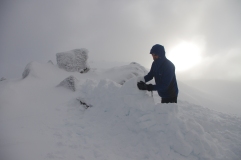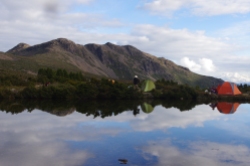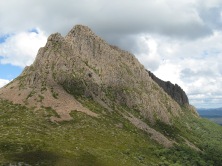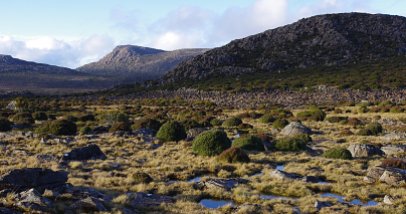March 2014.
Wow. Year four of the mountain journal. I love doing this early autumn reflection on the past year, but always feel a bit shocked that it has come around so soon. Thankfully the fires were not as bad this summer as the previous year, although the Tamboritha complex did give some serious worries for a while there. What stands out for me was the long and brutal heatwaves that we endured over summer after a fairly mediocre winter that saw various wash-outs of the entire snow base in Victoria mid season.
 As we cycle into the cooler seasons and get some perspective on the year, what is apparent to me is the growing number of serious land management issues confronting the mountains, from the woefully badly managed proposal from the Victorian government to re-introduce cattle grazing into the Victorian alpine park, opening some parks to prospecting, on-going struggles against logging, and plans to allow private development in national parks. The pro development, anti environment, climate change denying troglodytes that currently run Canberra and Victoria are happily dismantling the work of millions of Australians over decades who have built some basic environmental protections. Tony Abbott is more brash than the Victorian Liberals (announcing, for instance, this week that there are too many national parks) but both state and federal Coalition parties have done a hand brake turn and are racing back towards the 1950s when it comes to environmental issues as fast as they can.
As we cycle into the cooler seasons and get some perspective on the year, what is apparent to me is the growing number of serious land management issues confronting the mountains, from the woefully badly managed proposal from the Victorian government to re-introduce cattle grazing into the Victorian alpine park, opening some parks to prospecting, on-going struggles against logging, and plans to allow private development in national parks. The pro development, anti environment, climate change denying troglodytes that currently run Canberra and Victoria are happily dismantling the work of millions of Australians over decades who have built some basic environmental protections. Tony Abbott is more brash than the Victorian Liberals (announcing, for instance, this week that there are too many national parks) but both state and federal Coalition parties have done a hand brake turn and are racing back towards the 1950s when it comes to environmental issues as fast as they can.
This year there has been so much going on in Victoria that NSW has slipped off my radar a bit. The few posts on Tasmania generally got lots of hits, including the walking guides such as the Central Plateau trip from Lake McKenzie out to Long Tarns, and a huge number of visits to the story on the Ducane Traverse (for my money its still the best mid winter alpine trip that’s possible in Australia).
In terms of most visited sections, these were:
- The Alpine grazing debate
- The Backcountry film festival (coming soon, I promise)
- The Sidecountry stash – a perennial favourite – the guide to skiing and boarding terrain outside the groomed runs at Mt Hotham
- The Ducane traverse in central Tasmania
- The struggle to protect native forests from logging in the Toolangi area in Victoria’s Central Highlands
- A range of environmental issues such as prospecting in national parks
- The piece on Snow mobiles
- There was also an article on ‘glade clearing’, the process of hand trimming saplings along natural open lines in the forest to create backcountry ski/ boarding runs that got a lot of views.
- I have also been enjoying doing reviews of mountain related books and films.
- I discovered the beautiful book ‘Skiing the Western Faces Kosciusko’, by Alan Andrews, a true classic of Australian mountain literature.

I spent a fair bit of time checking out areas that have been burnt over the last few years. In Victoria we experienced three ‘mega’ fire events in the 19th century (fires greater than 250,000 ha). There were five mega fires in the 20th century, and we have already had three in less than a decade and a half of the 21st century. While some ideologues cling to the belief that climate change is not real, the mainstream science clearly tells us it is happening, that humans are driving it, and that we need to collectively greatly reduce our greenhouse emissions now if we are to avoid dangerous climate change.
Locally climate science tells us that we can expect longer and hotter summers with more intense fire seasons and warmer winters and less snow. I am at my happiest when I am in the mountains. I feel in balance with life just by being in an alpine environment and I get a huge amount of joy simply from being there. Yet I also feel keenly aware of how many of my favourite places are being trashed by humans or impacted by climate change.
In my mind I can see a future of more frequent fires, longer summers, warmer winters, and the land that I know and love so well being transformed into something new and poorer. Less old growth, trees pushed beyond their limits, less diversity of living things.
Its one of the strange paradoxes in life that the place that feeds me the most in terms of my spirit also calls out as it struggles to cope with unprecedented change.
To love and explore wild places like the mountains brings a certain responsibility to also care for them. In the days we live in, this calls us to get involved in actively protecting them. Politics may be boring or seem irrelevant, but political activity is the only thing that will provide protection for our remaining wild lands. And action on climate change will be what gives them some extra time to adapt and – hopefully – be spared the worst of what is coming if we decide to continue to vote for political parties that ignore mainstream climate science.























































March 10, 2014 at 7:50 am
Congratulations Mountain Journal!
Keep up the good work.
Cheers,
Ern
March 10, 2014 at 1:36 pm
Awesome job Mountain Journal.
I’ve been coming here regularly for about a year now, and your articles are always first class.
I just don’t know how you manage to do it!
Thanks,
Dt